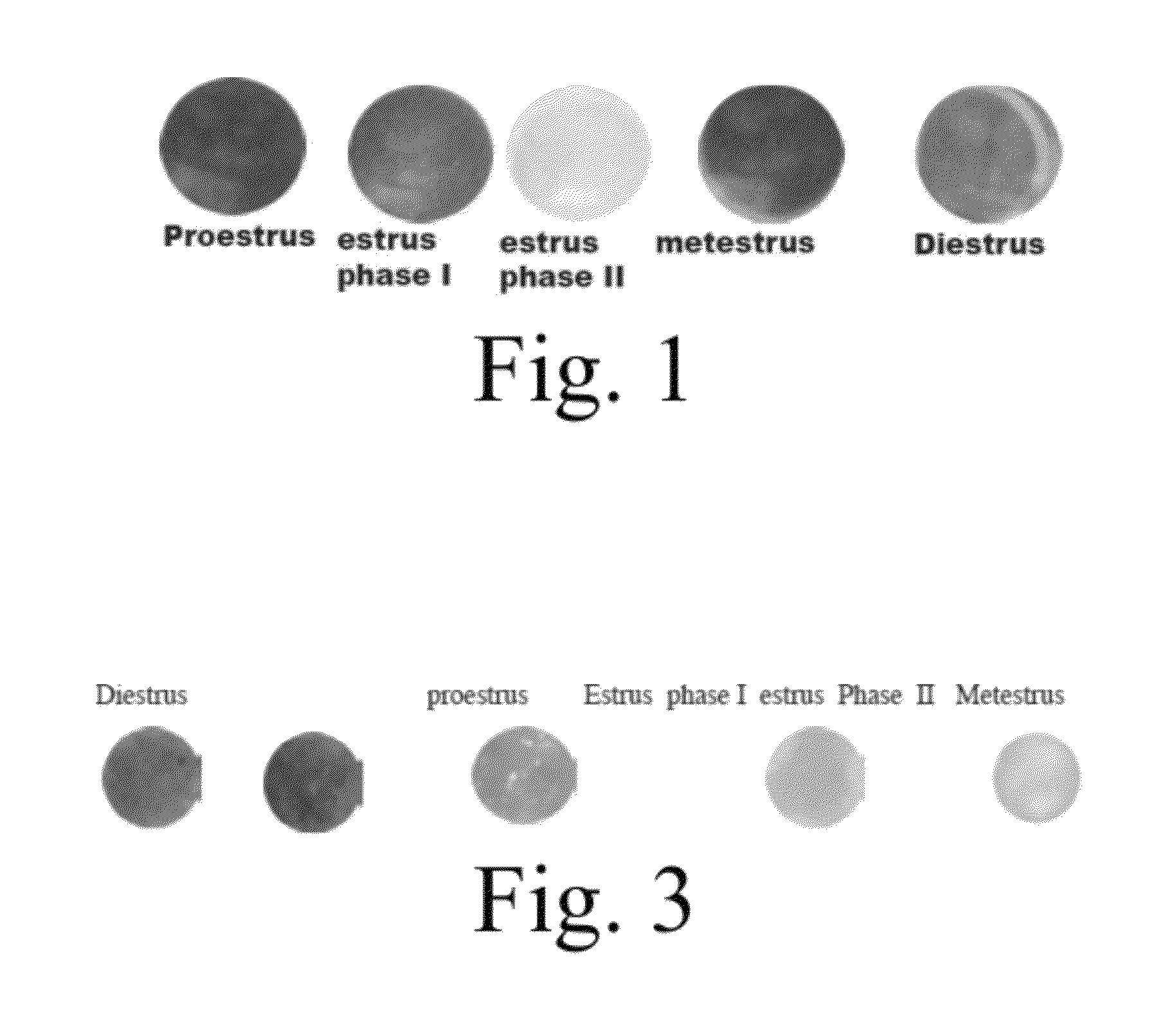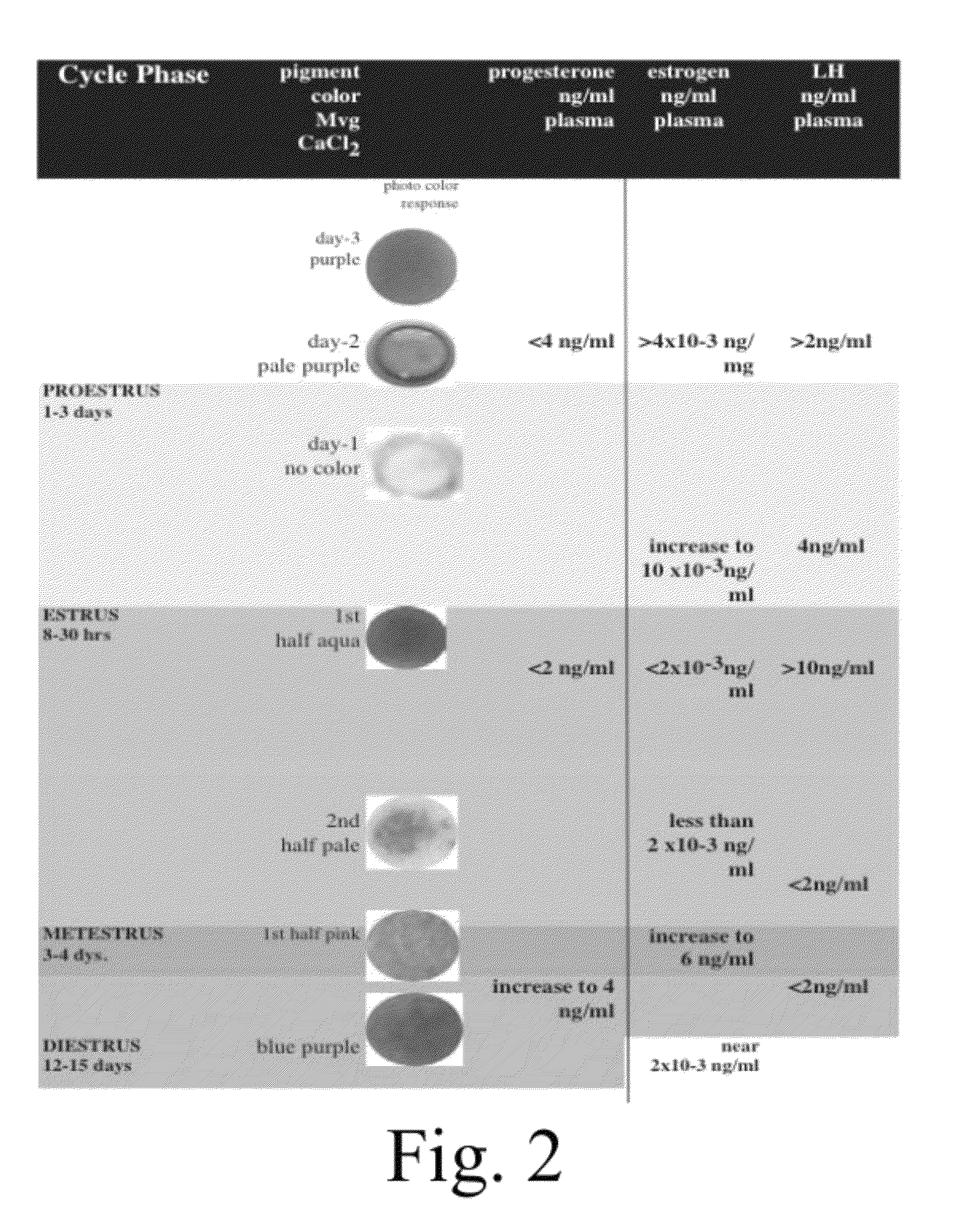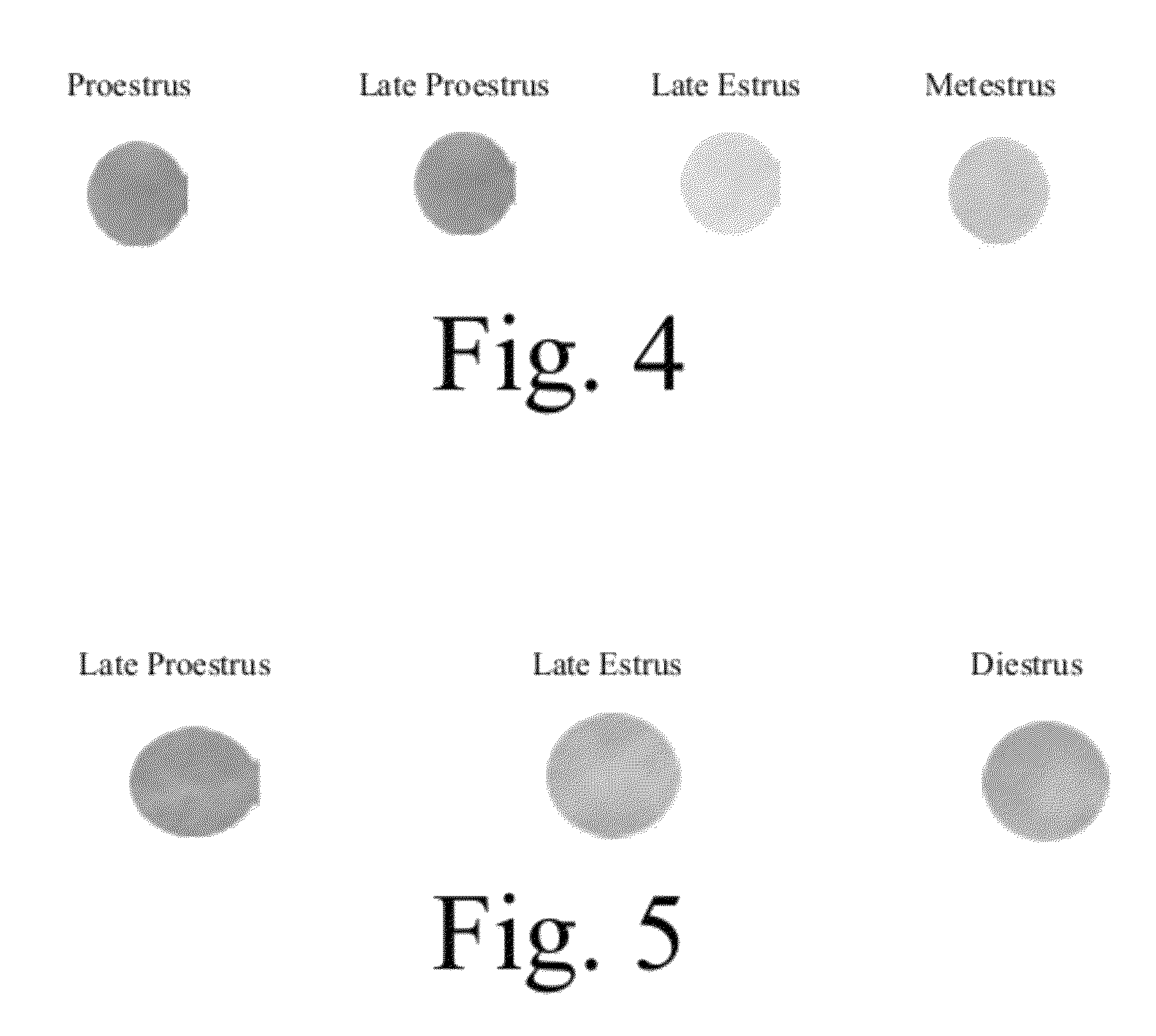Estrous cycle monitoring by color response
a color response and estrous cycle technology, applied in the field of estrous cycle monitoring, can solve the problems of large economic burden on the farmer, breeder waiting weeks or months, and insufficient time for insemination and breeding procedures,
- Summary
- Abstract
- Description
- Claims
- Application Information
AI Technical Summary
Benefits of technology
Problems solved by technology
Method used
Image
Examples
first embodiment
[0032]In a first exemplary method a female mammal is monitored for the estrus phase of the female mammal's estrous cycle. The exemplary method features depositing a biological sample from the female mammal on a hydrophobic substrate during a phase of the estrous cycle, and contacting the biological sample with an anthocyanin pigment and a flavonol pigment to produce a color response indicative of the phase of the estrous cycle of the female mammal at the time the biological sample was collected. The color responses (see, e.g., FIG. 1) produced by the different phases of the estrous cycle are visually distinctive from one another to the unaided human eye. However, it should be understood that even though differences in color responses are observable to the unaided human eye, analyzing equipment such as colorimeters and spectrophotometers, while not generally necessary for carrying out this embodiment, optionally may be employed to distinguish between estrous cycle phases.
[0033]An exe...
second embodiment
[0042]According to a second exemplary embodiment, the biological sample obtained from the mammal is combined with an anthocyanin pigment and divalent metal salt solution (e.g., aqueous calcium chloride or zinc chloride) to induce a reaction that provides a color response on a hydrophobic substrate. The hydrophobic surface may be any of those described above in connection with the first embodiment. An exemplary anthocyanin pigment for this second embodiment is one having the structure of Formula I above, but in which the three-position carbon has an O-glycosyl group and the five-position carbon preferably does not have an O-glycosyl group. The five-position carbon substituent may be, for example, hydrogen, hydroxy, or alkoxy, such as methoxy.
[0043]The hydrophobic surface is treated with the metallic salt solution, preferably prior to exposure to the biological sample, particularly when the pigment selected has a three-position carbon with an O-glycosyl group and a five-position carbo...
third embodiment
[0054]According to other exemplary embodiments, a flavonol may be selected as the pigment. Flavonols have a chemical structure similar to the anthocyanin structure described above, except that R4 is a keto group and R3 is usually a hydroxyl group (i.e., 3-hydroxyflavone).
[0055]Hydrophobic substrates and other testing procedures and parameters discussed above with respect to the first and second embodiments may be implemented in this third embodiment. For example, the flavonol pigment may be dissolved in an alcohol such as ethanol. Generally, the use of mono- and divalent metals is less important in this third embodiment in which a flavonol is used with iodine. The biological sample may be processed as described above in connection with the first and second embodiments.
[0056]As explained above, in accordance with exemplary methods the anthocyanins, flavonols, and other flavonoids produce a color response in synchrony with the different phases of the estrous cycle. Selection of querce...
PUM
| Property | Measurement | Unit |
|---|---|---|
| molar concentration | aaaaa | aaaaa |
| molar concentration | aaaaa | aaaaa |
| molar concentrations | aaaaa | aaaaa |
Abstract
Description
Claims
Application Information
 Login to View More
Login to View More - R&D
- Intellectual Property
- Life Sciences
- Materials
- Tech Scout
- Unparalleled Data Quality
- Higher Quality Content
- 60% Fewer Hallucinations
Browse by: Latest US Patents, China's latest patents, Technical Efficacy Thesaurus, Application Domain, Technology Topic, Popular Technical Reports.
© 2025 PatSnap. All rights reserved.Legal|Privacy policy|Modern Slavery Act Transparency Statement|Sitemap|About US| Contact US: help@patsnap.com



